Subversion Eclipse Plugin
This tutorial shows you how to install Subversion Eclipse Plugin on Eclipse IDE. Eclipse provides in-built plugin for CVS (Concurrent Versions System), a version control system widely used for version controlling the software artifacts. Now many software projects are using Subversion as version controlling tool. Eclipse does not provide any in-built tool for accessing the Subversion repository from the IDE. In this tutorial we will explain how to use Eclipse for the projects that uses Subversion as change management tool.
Read this tutorial to find how to install Subclipse into eclipse IDE and how to get started with the Subclipse. You learn how to install Subclipse and use Subclipse to check-in and check-out the source code from Subversion repository.
Why Subversion?
Subversion (SVN) is change management tool widely used as a popular replacement for CVS. Subversion offers improved performance, atomic commit, easy and fast branching over CVS.
Subclipse an Eclipse plugin for Subversion
Subclipse is an Eclipse plug-in that is providing support for Subversion within the Eclipse IDE. Subclipse allows the programmer to directly interact with a Subversion server, and check-in and check-out the project artifacts.
Installing Subclipse in Eclipse 3.x IDE
In this screenshot tour we will add the Subclipse plug-in to Eclipse by first creating an update site in Eclipse IDE and then running the update to download and install the Subclipse plugin.
Step 1:
Navigate to Select Help --> Software Updates --> Find and Install.
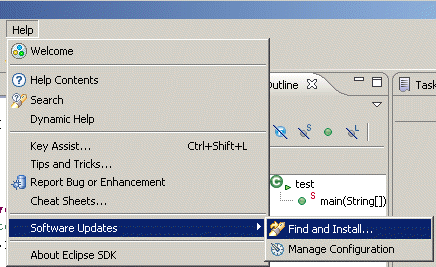
Step 2:
The following screen is displayed where we will change to the radio button to indicate that this is new installation. Now select the "Search for new features to install" option and click the "Next" button.
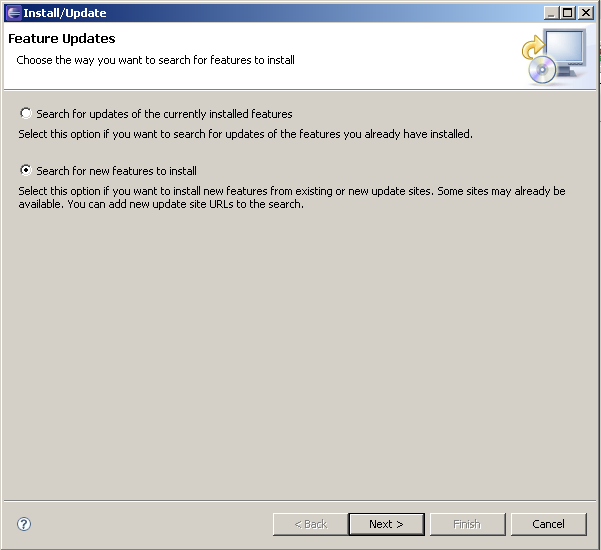
Step 3:
In this step the screen may be different depending on the features already installed on your machine. Click the "New Remote Site" button. Enter the Name and URL. Based on the eclipse version choose the url from the following list.
Name: Subclipse 1.2.x (Eclipse 3.2+)
URL: http://subclipse.tigris.org/update_1.2.x
Name: Subclipse 1.0.x (Eclipse 3.0/3.1)
URL: http://subclipse.tigris.org/update_1.0.x
Then click on the "OK" button. The new update site will be added to the list.

Step 4:
Now select the "Subeclipse" check box and click on the next button. Be sure to select it before clicking "Next".
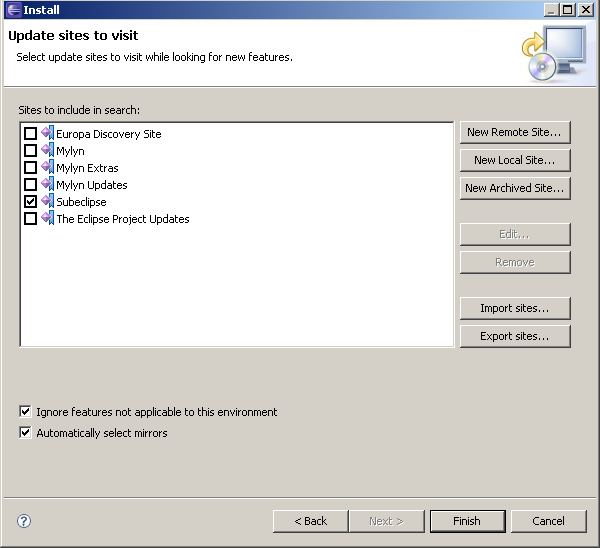
Step 5:
Next screen shows the features that are available to install. Select the required feature and click on "Next" button.

Step 6:
Now accept the license agreement and click on the "Next" button.

Step 7:
Now confirm the installation location and click on the "Next" button.
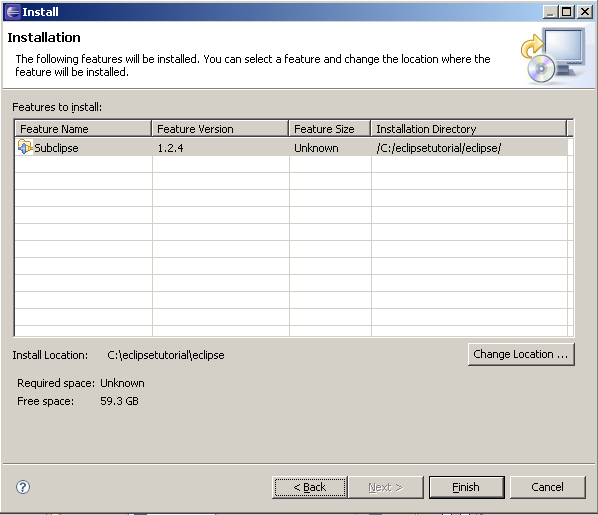 0
0
Step 8:
Now feature verification screen is displayed. Click on the "Install All" button to start the installation.
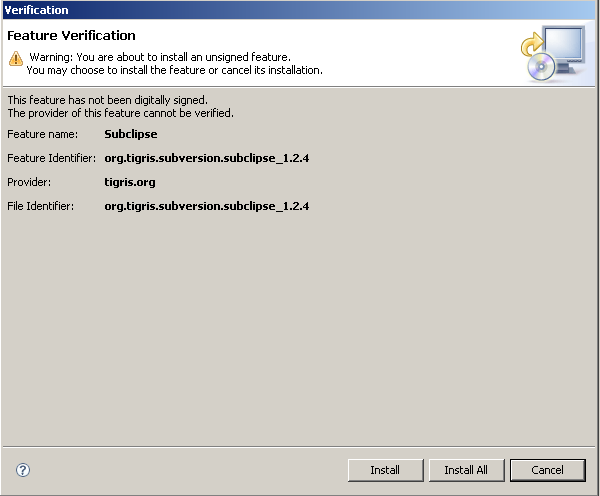 1
1
Step 9:
Following screen shows the installation in progress screen shot.
 2
2
Step 10:
Once the installation is complete eclipse will show the restart dialog box. Click on "Yes" button to restart eclipse IDE.
 3
3
Step 11:
In this step we will verify the Subclipse installation.
Select File --> New Project from the context menu. The New Project wizard show the option SVN-->Checkout Projects from SVN 4

Congrats you have successfully installed Subversion plugin to your Eclipse IDE.
5
